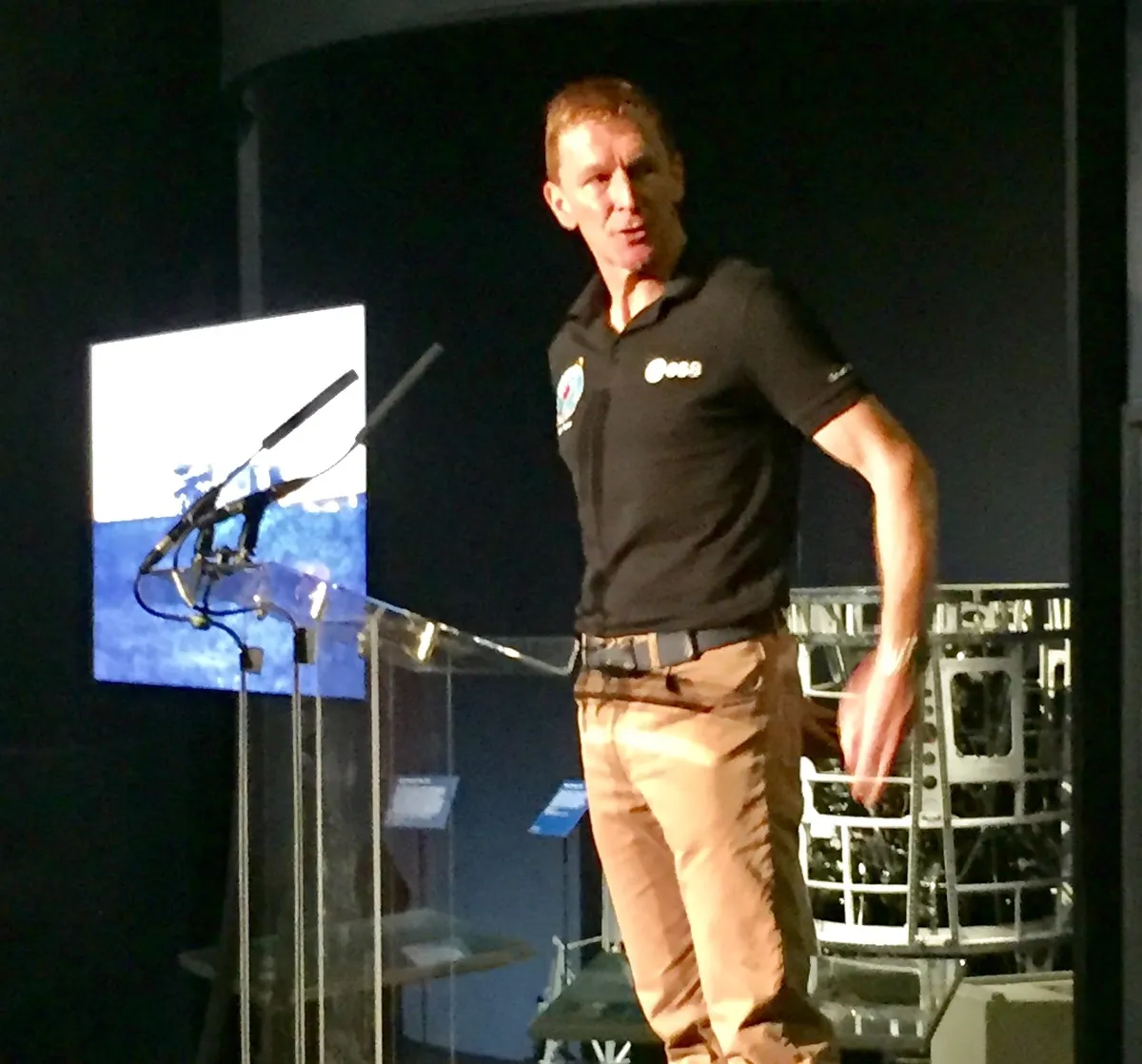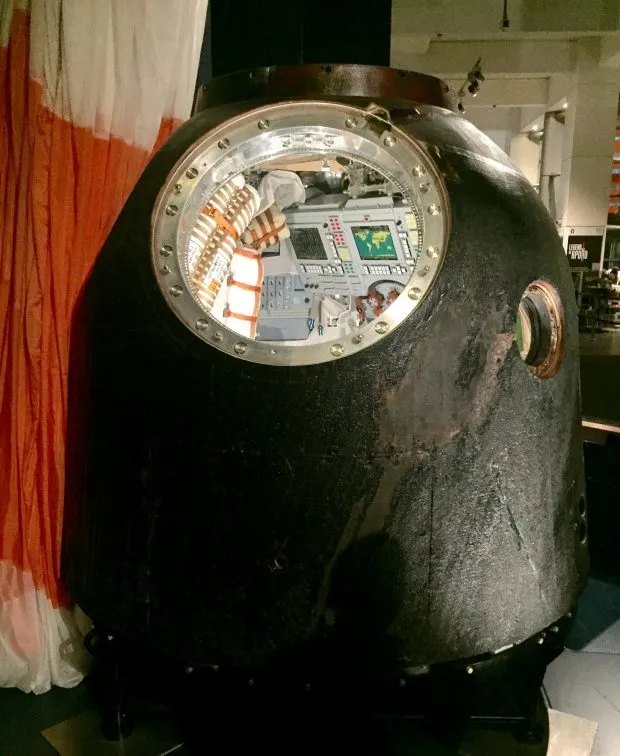The Soyuz TMA-19M spacecraft module in which UK astronaut Tim Peake launched to the International Space Station (ISS) in December 2015 and returned in mid-2016 has now been permanently installed at the Science Museum, following its 20-month tour of the UK.

At a ceremony event in London on May 22nd, Tim said that he was “delighted to see the Soyuz back home”. He described how the scorched bell-shaped capsule had experienced 1500ºC temperatures during its fiery re-entry at the end of his six month Principia mission for the European Space Agency (ESA). Tim explained how the Soyuz decelerated from over 30,000km/hr, ten times that of a rifle bullet, down to a 22km/hr in a mere 8 minutes!
Tim said he was very pleased that his personalised seat-liner was still on-board the 1.5 tonne Soyuz module. His Sokol KV2 spacesuit is to go on display at the Leicester National Space Centre.
Interestingly, if all goes well and Tim flies another ESA mission to the ISS – as hoped for by 2024 – it is likely that he will take a seat on-board one of the new US-built spacecraft that will taxi astronauts to the space station from later this year – either a Boeing built CST-100 Starliner, or a Space X's Crew Dragon.
During his presentation, Tim noted how 1.3 million people saw the Soyuz capsule during its national tour across eight locations, with over 540,000 people viewing it on display in Edinburgh alone.
The Science Museum paid Roscosmos/Energia £350,000 for the Soyuz capsule, which the Museum Group’s Director, Sir Ian Blatchford, said was considered a “bargain price” in the circumstances – this covered a chemical cleaning, its full refurbishment, plus transportation over from Russia.
The Soyuz allowed Tim and his crew-mates Yuri Malenchenko and Tim Kopra to spend almost 6 months in orbit on the ISS, with Tim carrying out his highly successful Principia science and outreach mission as part of Expedition 46/47.

Tim described how he would carefully inspect the docked TMA-19M spacecraft every day from an ISS window, trying to spot any signs fuel leaks or deterioration. In the end, the venerable Soyuz module performed flawlessly and bought him back to a safe landing on the Kazakhstan steppes in June 2016.
The Science Museum is now running a series of space events as part of its Summer of Space, celebrating the 50-year anniversary of the Apollo 11 moonlanding this July. The Museum displays extensive space hardware, including the Apollo 10 command module that flew to the Moon in May 1969, its training simulator capsule console, some real moon rock and a full-sized Lunar Module mock-up.
Written by Nick Spall
Nick Spall will be proving a full-length update interview with Tim Peake in a forthcoming issue of BBC Sky at Night Magazine, talking to Tim in detail about his next mission and his hopes for future UK/ESA involvement in the space station plus NASA’s emerging Project Artemis, the human return to the Moon for the mid-2020s.
